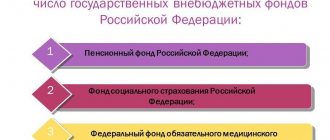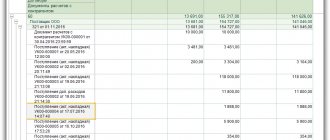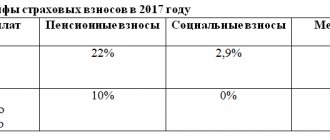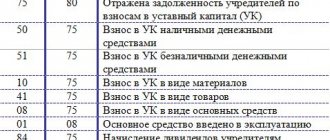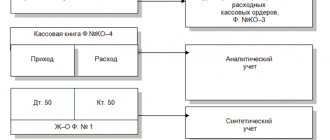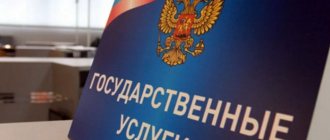What transactions should be used to record the return of funds to the Social Insurance Fund?
State institution:
The return of accounts receivable from the previous and current year is reflected in accounting in the same way - as a restoration of cash expenses. But the state institution is obliged to transfer the receivables of previous years to budget revenues.
In accounting, make the following entry:
D. KRB.1.304.05.213 – K. KRB.1.303.02.730 - the return from the FSS is credited to the personal account of the PBS (based on an extract from the personal account).
Reflect the return in f. 0503127 and f. 0503123 in the expenses section
In f. 0503127 such receipt is reflected as a restoration of cash expenses in section 2 “Expenses” in column 6 according to the corresponding analytics code with a minus sign, in section 3 on line 812 in gr. 5.
In f. 0503123 return of receivables of the current year is reflected similarly to f. 0503127. The return of accounts receivable from last year is reflected in sections 3 and 4 in lines 421, 501, 980.
Budgetary (autonomous) institution:
Reflect the return of receivables from previous years using the receipt code - 510 “Receipt to budget accounts.” Reflect the return of the current year as a restoration of expenses for the corresponding CVR (letter of the Ministry of Finance of Russia dated December 23, 2021 No. 02-07-10/77985).
The wiring is like this:
D. 0.201.11.510 - K. 0.303.02.730, increase in off-balance sheet account 17 (analytics code - KVR, KOSGU code - 213) reimbursement was received from the Social Insurance Fund for the current year (as a restoration of cash expenses).
D. 0.201.11.510 - K. 0.303.02.730, increase in off-balance sheet account 17 (analytics code - KVR, KOSGU code - 510) reimbursement was received from the Social Insurance Fund last year.
The current year's return is reflected in f. 0503737 section “Expenses” and f. 0503723 in the “Disposals” section with a minus sign, as a restoration of cash expense.
Return of last year in the report f. 0503737 is reflected in lines 591 and 950 with detail by CWR in the corresponding columns of the report f. 0503737.
In the report on f. 0503723 reflect the receipt from the Social Insurance Fund in the same way, that is, in section 3 on lines 421 and 501.
Rationale
1. From the recommendation
How to take into account contributions for insurance against accidents and occupational diseases
Postings
Postings for calculating premiums for insurance against accidents and occupational diseases depend on the type of institution.
In the accounting of government institutions:
Reflect the accrual and payment of contributions using the following entries:
| № | Account debit | Account credit | |
| 1. | Contributions for insurance against accidents and occupational diseases have been calculated | KRB.1.401.20.213 | KRB.1.303.06.730 |
| 2. | Contributions to the Social Insurance Fund of Russia have been transferred | KRB.1.303.06.830 | KRB.1.304.05.213 |
The accrual of insurance against accidents and occupational diseases to employees, as well as the receipt of compensation from the Social Insurance Fund to reimburse expenses incurred by the institution, reflect the following entries:
| № | Account debit | Account credit | |
| 1. | Temporary disability benefits accrued due to an industrial accident and occupational disease | KRB.1.303.06.830 | KRB.1.302.13.730 |
| 2. | Received money from the Federal Social Insurance Fund of Russia to reimburse expenses incurred by the institution | KRB.1.304.05.213 | KRB.1.303.06.730 |
This procedure is established by paragraph 104 of Instruction No. 162n
In accounting for budgetary institutions:
Reflect the accrual and payment of contributions using the following entries:
| № | Account debit | Account credit | |
| 1. | Contributions for insurance against accidents and occupational diseases have been calculated | 0.109.Х0.213<1> | 0.303.06.730 |
| 2. | Contributions to the Social Insurance Fund of Russia have been transferred | 0.303.06.830 | 0.201.11.610 |
| Increase in off-balance sheet account 18 (KVR 119, KOSGU 213) | |||
| X – analytical code of the synthetic account group of the accounting object. <1> If the accounting policy states that these expenses do not form the cost of products (works, services), write them off to account 0.401.20.213. | |||
The accrual of insurance against accidents and occupational diseases to employees, as well as the receipt of compensation from the Social Insurance Fund to reimburse expenses incurred by the institution, reflect the following entries:
| № | Account debit | Account credit | |
| 1. | Temporary disability benefits accrued due to an industrial accident and occupational disease | 0.303.06.830 | 0.302.13.730 |
| 2. | Received money from the Federal Social Insurance Fund of Russia to reimburse expenses incurred by the institution | 0.201.11.510 | 0.303.06.730 |
| Decrease in off-balance sheet account 18 (KVR 119, KOSGU 213) | |||
This procedure is established by paragraphs 60, 61, 65, 131–133 of Instruction No. 174n
2. From the recommendation
How can a budgetary (autonomous) institution reflect the crediting to the personal account of the amounts of receivables from previous years from the counterparty?
Reflect the return of receivables from previous years using the receipt code - 510 “Receipt to budget accounts.” Don’t forget, if you returned the current year’s advance, reflect the restoration of expenses according to the corresponding CVR. This is stated in the letter of the Ministry of Finance of Russia dated December 23, 2021 No. 02-07-10/77985.
When a receivable needs to be transferred to the budget
Transfer accounts receivable from previous years to budget income if cash expenses were due to:
limits on budgetary obligations (budgetary allocations), including if cash expenditures were made by an institution in the status of a recipient of budgetary funds before changing the type of institution;
targeted subsidies and subsidies for capital investments. Federal institutions have the right not to transfer receivables to budget revenue if there is a decision of the founder;
budget investments (in the form of LBO).
This follows from paragraph 2 of the General Requirements, approved by Order of the Ministry of Finance of Russia dated July 28, 2010 No. 82n, Article 242 of the Budget Code of the Russian Federation, Part 18 of Article 30 of the Law of May 8, 2010 No. 83-FZ, Part 3.17 of Article 2 of the Law of November 3, 2006 No. 174 -FZ and letters of the Ministry of Finance of Russia dated October 8, 2012 No. 02-13-06/4131.
If the debt is transferred to the budget by the counterparty (debtor), provide him with the details. Including:
details of account 40101 “Revenue distributed by the bodies of the Federal Treasury between the budgets of the budget system of the Russian Federation”;
classification code for budget revenues and code for the budget revenue administrator administering the specified revenues.
If the counterparty has returned the debt to the institution’s personal account or in cash to the cash desk, transfer the money to budget revenue yourself.
In the payment document for transfer to the budget, the debtor or institution indicates the budget revenue code 000 1 1300 130 “Other income from compensation of state expenses.” This code needs to be detailed based on the budget from which cash payments were made. For example, if expenses were made through targeted subsidies from the federal budget, the code 000 1 13 02991 01 0000 130 is used. In this case, in place of the 1st–3rd digits of the code, indicate the code of the chief administrator. In place of the 14th–20th digits, indicate the code of the subtype of income. This is stated in paragraph 4.1 of Section II of the instructions approved by Order of the Ministry of Finance of Russia dated July 1, 2013 No. 65n.
When can a receivable be used in the current year?
An institution has the right to use returned accounts receivable from previous years in the current year if expenses were previously made at the expense of:
funds from paid activities or through subsidies for government tasks;
targeted subsidy, if there is permission from the founder.
This is stated in parts 17–18 of Article 30 of the Law of May 8, 2010 No. 83-FZ, part 3.15 of Article 2 of the Law of November 3, 2006 No. 174-FZ.
In these cases, the return of receivables from previous years is credited to the institution’s accounts. On the personal account, these receipts are reflected in the manner established by the Treasury of Russia or the financial authority (depending on where the institution has a personal account). This conclusion regarding targeted subsidies is confirmed by the Russian Ministry of Finance in letter dated October 8, 2012 No. 02-13-06/4131.
If the institution is serviced by the financial authority of a constituent entity of the Russian Federation (municipal entity), the procedure for recording transactions when returning accounts receivable from previous years is established by the relevant financial authority (Part 3, Article 30 of Law No. 83-FZ of May 8, 2010). Thus, in the Samara region, the return of accounts receivable from previous years is reflected as a restoration of cash expenses with reflection on the same BCC for which there was previously an expense (clause 5.6 of the Procedure approved by order of the Ministry of Financial Management of the Samara Region dated December 13, 2007 No. 12-21/98 ).
If a personal account is opened with the Treasury of Russia, the procedure for recording transactions on personal accounts is approved:
for budgetary institutions - by order of the Treasury of Russia dated July 19, 2013 No. 11n;
for autonomous institutions - by order of the Treasury of Russia dated December 8, 2011 No. 15n.
Now let’s look at how the Russian Treasury authorities reflect the return of receivables on personal accounts.
1. Refund for government assignments or paid activities
Such receivables from previous years are reflected in the personal account of a budgetary and autonomous institution (codes 20, 30). The institution manages this money independently.
The basis for crediting funds to the institution's personal account will be the debtor's payment documents. The institution must independently inform the debtor about the procedure for filling out such documents. For example, they need to indicate information about the account details to which receivables should be transferred. In the current year, funds can be credited according to the income code (as outstanding receipts). Then submit a notification to the Russian Treasury to clarify the operations (f. 0531852). And in it, indicate to which expense type code the received funds should be credited.
This follows from paragraphs 11, 12, 15 of the Procedure approved by Order of the Treasury of Russia dated July 19, 2013 No. 11n, paragraphs 10, 13 of the Procedure approved by Order of the Treasury of Russia dated December 8, 2011 No. 15n, and explained in the letter of the Ministry of Finance of Russia dated December 23, 2016 No. 02-07-10/77985
3. From the recommendation
How can a budgetary and autonomous institution draw up a Report on the institution’s implementation of the financial and economic activity plan (f. 0503737)
The report (f. 0503737) consists of four sections in order:
income of the institution;
expenses of the institution;
sources of financing the institution's funds deficit;
information on returns of balances of subsidies and expenses of previous years.
Fill in the indicators in the sections according to accounting data in the context of analytical codes of the budget classification structure.
In the sections of the Report, reflect:
| Chapter | Analytics code | How to shape |
| 1. Income of the institution | codes of the analytical group of the budget income subtype<1> | Reflect data on the receipt of income and their return in the current year. Exception – returns of balances of subsidies or grants from previous years |
| 2. Establishment expenses | codes of types of expenses (KVR)<1> | Reflect data on expenses taking into account those restored in the current year. Exception – refunds of expenses from previous years |
| 3. Sources of financing the institution’s funds deficit | codes of the analytical group of the type of sources of financing budget deficits<1> | Reflect data on cash receipts and disposals of sources of financing the institution's funds deficit. On line 591 (analytics code 510) of the section, reflect data on returns of provisions and expenses of previous years |
| 4. Information on refunds of balances of subsidies and expenses of previous years | Help section. Reflect in it: | |
| line 910 the amount of return of remaining subsidies from previous years to budget revenues. Please detail the codes in column 3: 130 – subsidies for government tasks; 180 – targeted subsidies and grants | ||
| line 950 data on the return of receivables or the restoration of cash expenses of previous years in the accounts of the institution. Please detail the codes in column 3: 000 – cash security; KVR – accounts receivable from previous years | ||
| <1> Generate the report according to the budget classification codes that you use. If there are no indicators for some codes, do not fill in the lines for them. | ||
Reflect the data of all sections in the following terms:
personal accounts in the body that provides cash services - column 5;
ruble and foreign currency accounts in credit institutions – column 6;
cash register of the institution – column 7;
non-cash transactions – column 8.
Features for Section 3
Reflect all cash flow transactions in line 700. Do it this way: on line 710 indicate cash receipt transactions, on line 720 – disposal transactions.
Additionally, expand the direction of movement of funds by line:
520, 620 – receipt of money and the result of currency revaluation;
730 – internal turnover: transfer of money from the account to the cash desk and back, between the accounts of the institution;
820 – movement of money between the institution and separate divisions or branches that have the status of legal entities;
830 – movement of money in the account balance or in the cash register for internal borrowings and non-cash transactions.
This procedure is established by paragraphs 36, 42–44.1 of the Instruction, approved by order of the Ministry of Finance of Russia dated March 25, 2011 No. 33n.
For more details on how to generate Report indicators (f. 0503737), see the table.
Attention: when you generated the Report (f. 0503737), check the equality in columns 4, 5, 6, 7, 8, 9: line 450 = line 500 with the opposite sign (clause 41 of the Instructions approved by order of the Ministry of Finance of Russia dated March 25, 2011 No. 33n).
What to consider in your quarterly report in 2021
When filling out the Report (f. 0503737), take into account the explanations of the financial department. For 2021 reporting, use the joint letter dated April 7, 2021 of the Russian Ministry of Finance No. 02-07-07/21798 and the Russian Treasury No. 07-04-05/02-308.
Generate the report according to the codes of the subtype of income, CVR and codes of the type of sources of financing budget deficits. Use the template from the letter. Do not include lines for which there are no indicators in the report.
If you are returning the balances of subsidies from previous years, detail line 910 “Returned balances of subsidies from previous years” by code:
130 – return of remaining subsidies for government tasks;
180 – return of targeted subsidies and grants.
Also see how to reflect cash shortages in the Report (f. 0503737).
All features of the quarterly Report (f. 0503737) are given in paragraph 2.2 of the appendix to the joint letter dated April 7, 2021 of the Ministry of Finance of Russia No. 02-07-07/21798 and the Treasury of Russia No. 07-04-05/02-308
Budgetary accounting of accepted expenses for preventive measures by the social insurance fund
1) The Federal Social Insurance Fund of Russia compensates the institution for the costs of conducting a special assessment of working conditions. Financial support is provided through insurance contributions to the Federal Social Insurance Fund of Russia.
That is, payers reduce the amount of contributions for injuries by the cost of services provided.
For correspondence of accounts, see the example given in the justification. 2) If the institution paid the costs of conducting a special assessment of working conditions at its own expense, then the costs will be reimbursed by the Federal Social Insurance Fund of Russia.
In this case, the crediting of funds received from the Federal Social Insurance Fund of Russia as reimbursement of expenses should be reflected as compensation for the institution’s expenses under Article 130 “Income from the provision of paid services (work).” Make the following entries in the accounting: Debit 1.209.30.560 Credit 1.401.10.130 - the debt of the Federal Social Insurance Fund of Russia to the institution has been accrued, Debit 1.304.05.000 Credit 1.209.30.660 - money has been received from the Social Insurance Fund of Russia to reimburse the costs of the assessment.
See: 1. How to reflect in accounting payments for property and services as part of measures to reduce injuries through insurance premiums for accidents and occupational diseases 2. How to take into account contributions for insurance against accidents and occupational diseases Rationale From the recommendation of Sergei Razgulin, Actual State Advisor of the Russian Federation 3rd class How to reflect in accounting the costs of a special assessment of working conditions Accounting for the costs of a special assessment of working conditions depends on how they were paid: from the funds of the institution or from contributions for insurance against accidents and occupational diseases.
KVR and KOSGU If an institution conducts a special assessment of working conditions at its own expense, pay for it according to the element of type of expense 244
“Other procurement of goods, works and services to meet state (municipal) needs”
. And if through contributions to the Social Insurance Fund of Russia as part of preventive measures to reduce injuries - according to the same CVR as the contributions themselves. In accounting and reporting, enter expenses for special assessment of working conditions under subarticle KOSGU 226.
This is stated in sections III and V of the instructions approved by order of the Ministry of Finance of Russia dated July 1, 2013 No. 65n, letter of the Ministry of Finance of Russia dated November 8, 2021 No. 02-05-11/65288.
Also confirms the correct use of KVR and KOSGU by linking these codes with each other.
Postings Postings for accounting for the costs of conducting a special assessment of working conditions depend on the type of institution. In the accounting of government institutions: If a special assessment of working conditions was carried out at the expense of the institution, make an entry in the accounting: Debit KRB.1.401.20.226 Credit KRB.1.302.26.730 - the costs of conducting a special assessment of working conditions at the expense of the institution are taken into account. This follows from paragraphs 102, 111 of Instruction No. 162n.
If a special assessment of working conditions was carried out at the expense of accident insurance contributions, take into account the costs of reducing the debt on insurance premiums to the Federal Social Insurance Fund of Russia. An example of how to reflect in accounting the financing of preventive measures to reduce injuries. The state institution "Alpha" finances preventive measures to reduce injuries.
For the current year, the rate of contributions for insurance against accidents and occupational diseases is set at 0.2 percent (corresponding to the 1st class of professional risk). In June, the institution accrued salaries to employees in the amount of 4,000,000 rubles.
The accountant calculated contributions for insurance against accidents and occupational diseases for June in the amount of 8,000 rubles. (RUB 4,000,000 × 0.2%). In June, the institution received permission to conduct a special assessment of working conditions using contributions for insurance against accidents and occupational diseases.
The amount of financing was 7,000 rubles.
In the same month, the institution conducted a special assessment of working conditions in the amount of 7,000 rubles. (excluding VAT). The cost of services for conducting a special assessment of working conditions was offset by the accountant against the payment of contributions for insurance against accidents and occupational diseases.
In June, Alpha's accountant made the following entries in accounting: No. Contents of transaction Account debit Account credit Amount, rub. 1. Salaries for June were accrued KRB.1.401.20.211 KRB.1.302.11.730 4,000,000 2. Contributions for insurance against accidents and occupational diseases were accrued KRB.1.401.20.213 KRB.1.303.06.730 8000 3.
A special assessment was carried out as part of measures to reduce injuries (KVR 119, 129) KRB.1.401.20.226 KRB.1.302.26.730 7000 4. The fee for the special assessment was transferred (KVR 119) KRB.1.302.26.830 KRB.1.304.05.226 7000 5 Accrual reflected requirements for compensation of state costs incurred as part of measures to reduce injuries KRB.1.209.30.560 KDB.1.401.10.130 7000 6.
Offset of expenses incurred as part of measures to reduce injuries by counterclaim to the FSS KRB.1.303.06.830 KRB.1.209.30.660 7000 7. Insurance premiums minus expenses were transferred to the FSS as part of measures to reduce injuries KRB.1.303.06.830 KRB. 1.304.05.213 1000 On July 11, the accountant submitted to the FSS of Russia at the place of registration of the institution a statement in Form 4-FSS and a report on the use of insurance premiums with supporting documents attached.
From the recommendation “How to take into account the costs of conducting a special assessment of working conditions”
Which entries should be used to account for benefits?
The main subsidies that are paid from the Social Insurance Fund are the following payments: In another article, we provided a detailed breakdown of the list of such payments and methods for calculating them.
The right to offset the received excess amount against future contributions (if it fits within the current billing period); The right to receive a refund when contacting the Social Insurance Fund department with the appropriate package of documents. Dt 0.401.20.211, 0.109.60.211, 0.109.70.211 Kt 0.302.11.730 - disability benefits accrued, posting, at the expense of a budgetary institution. Dt 0.303.02.830 Kt 0.302.13.730 - benefits (posting) from the Social Insurance Fund have been accrued. Dt 0.302.11.830 (0.302.13.830) Kt 0.201.34.610 - issuance through the cash register. Dt 0.302.11.830 (0.302.13.830) Kt 0.304.03.730 - withholding money for transfer to the employee’s account. Dt 0.304.03.830 Kt 0.201.11.610 - transfer from the account of a budgetary institution of sick leave (and other payments) to the employee's account (use of interim account 304 is not mandatory).
Kt 18 (KOSGU) - accounting for the disposal of funds from accounting accounts. Dt 0.201.11.510 Kt 0.303.02.730 - crediting of compensation funds from the Social Insurance Fund, according to paragraph.
72, 132 Instructions 174n. Dt 0.303.02.000 Kt 0.302.13.000 - funeral assistance has been accrued. Dt 0.302.13.000 Kt 0.201.34.000 - funds were issued through the cash register.
Increase count. 18 on off-balance sheet (KOSGU 213) - withdrawal of funds from the cash desk of a budgetary institution.
Temporary disability benefits have been accrued, posting: Dt 69 Kt 70. Issue through the cash register - Dt 70 Kt 50.
Transfer via cash account - Dt 70 Kt 51.
Assistance paid to employees during pregnancy and childbirth is also reflected in Dt 69 and Kt 70. Dt 51 Kt 69 - funds received - reimbursement of expenses from the Social Insurance Fund. In the case when a lump sum funeral benefit is accrued and paid to an employee, the postings will be as follows:
- Dt 69 Kt 73 - accrual;
- Dt 69 Kt 76 - cases when a relative or other person receives help;
- Dt 69 Kt 76 - compensation for services of a specialized organization;
- Dt 73, 76 Kt 50, 51 - payment.
Calculation of temporary disability benefits based on sick leave
As a rule, the policyholder calculates the full temporary disability benefit and pays it to the employee, and then reimburses the costs by contacting the territorial social insurance funds. The organization is obliged to accrue benefits within 10 days after presentation of sick leave and pay funds on the nearest date of payment of wages:
- To calculate the payment, you must first determine the employee’s average daily earnings using the formula: employee’s income for previous illnesses 2 calendar years / 730.
- After calculation, you need to check the resulting figure with the minimum average daily earnings for the current year.
Note from the author! To determine the minimum value of average daily earnings, it is necessary to calculate it based on the minimum wage established for the current year: 9489 * 24 / 730 = 311.97 - the minimum for 2021.
If the employee’s average daily earnings are below the minimum, further calculations are made based on the minimum established for the current year.
After the calculation, it is necessary to determine the amount of temporary disability benefits for the employee per day, which will depend on the length of service:
with work experience of more than 8 years, the benefit is paid 100%;
5-8 years – 80% is taken into account;
up to 5 years of work experience – 60%.
The daily allowance is multiplied by the number of calendar days of illness registered on the sick leave.
Author's addition! For employees who have had no income in the previous 2 years (for example, those returning from maternity leave), sick leave is paid based on the minimum wage, based on their total length of service.
FSS return postings 2021
Read about the features of reflecting penalties on social contributions in accounting here.
Results Changes in the administrator and legislation on social contributions are more related to the procedure for calculating and transferring these payments than to the accounting methodology. At the same time, timely signing of the new version of the order on the accounting policy for separate accounting of old and new contributions will help you avoid possible troubles with their erroneous payment or during a tax audit. In connection with the above, each policyholder can develop his own form of the corresponding application, using the following mandatory details provided by the Ministry of Health and Social Development of the Russian Federation: To simplify the procedure for drawing up the form, you can use a sample application for reimbursement of expenses to the Social Insurance Fund or the same form from the websites of the territorial departments of the Social Insurance Fund.
This article describes standard transactions that reflect the procedure for refunding funds in the buyer's and supplier's accounts, as well as the documents on the basis of which they are carried out.
- Debit 70 Credit 73 – the excess amount paid was withheld from the salary
In the month of erroneous accrual, reversing entries are made for the calculation of salaries, taxes and contributions.
Get 200 video lessons on accounting and 1C for free:
- Free video tutorial on Accounting and 1C 8.3 and 8.2;
- Tutorial on the new version of 1C ZUP 3.0;
- Good course on 1C Trade Management 11.
Cost calculation 90/3 68 VAT Accrual of VAT on shipped goods RUB 23,644. Consignment note 51 62 Payment for products of 155,000 rubles was received from Demos.
Discrepancy report 19 60 VAT accounting for returned goods RUB 23,644. Statement of discrepancies 68 VAT 16 Acceptance of returned goods for deduction RUB 23,644.
Reflection in accounting of compensation from the Federal Social Insurance Fund of the Russian Federation
as amended as of May 14, 2019 The source of financial support for the costs of paying benefits for temporary disability are funds from the Federal Social Insurance Fund of the Russian Federation (with the exception of the first three days of temporary disability, which are paid at the expense of the employer).
To receive compensation from the Social Insurance Fund, a government agency must provide a certain list of documents to the fund department. We will consider the procedure for reimbursement of institution expenses for payment of benefits in this article.
The conditions, amounts and procedure for providing benefits for temporary disability, pregnancy and childbirth, and monthly child care benefits are regulated by Federal Law No. 255-FZ of December 29, 2006
“On compulsory social insurance in case of temporary disability and in connection with maternity”
The accounting (budget) accounting procedure in institutions is regulated by:
- in government institutions - instructions, approved. by order of the Ministry of Finance of the Russian Federation dated December 6, 2010 No. 162n (hereinafter referred to as instruction No. 162n);
- in budgetary institutions - instructions, approved. by order of the Ministry of Finance of the Russian Federation dated December 16, 2010 No. 174n (hereinafter referred to as instruction No. 174n);
- in autonomous institutions - instructions, approved. by order of the Ministry of Finance of the Russian Federation dated December 23, 2010 No. 183n (hereinafter referred to as instruction No. 183n).
At the same time, accounting (budget) accounting in government institutions is regulated by instructions approved by Order of the Ministry of Finance of the Russian Federation dated December 1, 2010 No. 157n (hereinafter referred to as Instruction No. 157n), which is common for any type of institution. Based on the provisions of paragraph 132 of instructions No. 174n and paragraph.
160 of instruction No. 183n, the receipt of compensation from the Federal Social Insurance Fund of the Russian Federation to the personal account of the institution is reflected: Debit 0.201.11.510 credit 0.303.02.730 (0.303.06.730).
These transactions are reflected as a restoration of cash expenses under subsection 213 of KOSGU. It is necessary to note the use of off-balance sheet accounts to reflect transactions for reimbursement of funds from the Social Insurance Fund. The procedure for using off-balance sheet accounts will differ depending on the period for which the Social Insurance Fund reimburses expenses. So, if the Social Insurance Fund reimburses expenses of the current period, then such transactions are reflected by reducing off-balance sheet account 18 “disposal of funds” opened to account 201, according to expense items (KVR 119, KOSGU 213) (clause 367 of instructions No. 157n). If the Social Insurance Fund reimburses expenses for the previous reporting period (year), the receipt of the specified reimbursement to the personal account will be reflected by increasing the off-balance sheet account 17 “cash receipts” opened to account 201 (clause.
365 instructions No. 157n). In accordance with clause 104 of instruction No. 162n, the receipt of compensation from the Social Insurance Fund is reflected: Debit 1.304.05.213 credit 1.303.02.730 (1.303.06.730).
Collegium of Advocates
Incorrectly received funds in accounting do not belong to the income of the organization. This is due to the fact that in accounting income is recognized as an increase in the economic benefits of the organization* (clause 2 of PBU 9/99). However, when erroneously transferred money arrives in the current account, its purpose is not determined. They do not relate to income from ordinary activities, nor to other income* (clause 4 of PBU 9/99). The organization is obliged to return them, therefore, in accounting, such amounts cannot be recognized as income. * In addition, in relation to these funds, the conditions for recognizing income given in Section IV of PBU 9/99 are not met. An exception to this rule is funds received, which the organization has the right not to return. Reflect them in accounting depending on the purpose of the funds received (advance payment, accounts receivable with an expired statute of limitations, etc.).
Postings for the calculation of insurance premiums in 2019-2019
Postings for insurance premiums in 2019-2019 did not undergo major changes, but there are still some peculiarities in the calculation of these payments in connection with the change of the main administrator.
Let's look at them in more detail. Read about what has changed in the rules for calculating contributions due to the change of their administrator here. Let's look at the basic accounting entries for accounting for social insurance contributions using an example.
In accounting, calculations for contributions will look like this: Wages accrued for March 2021 Contributions for temporary disability and maternity accrued (VNiM) Contributions accrued for compulsory pension insurance (OPI) Contributions accrued for compulsory medical insurance (CHI) Contributions accrued for accident insurance cases and work-related injuries (NSiPT) VNIM benefits accrued at the employer's expense (3 days) VNIM benefits accrued at the expense of the Social Insurance Fund (6 days) Reimbursement received from the Social Insurance Fund* * Reimbursement from the Social Insurance Fund received minus unpaid contributions to the Social Insurance Fund.
IMPORTANT! In order to protect yourself in the event of a tax audit or legal proceedings, add provisions to the accounting policy order regarding changes in the accounting methodology for insurance premiums. Read about the features of reflecting penalties on social contributions in accounting here.
Read about innovations in the rules for submitting reports to the Social Insurance Fund in the material “Beneficial changes in the procedure for submitting 4-FSS reports.” Be the first to know about important tax changes
Attention!
From January 1, 2021, policyholders have the right, at the expense of insurance premiums, to purchase only Russian personal protective equipment:
— from January 1, 2021, expenses for the purchase of workwear, safety footwear and other personal protective equipment manufactured only in Russia will be reimbursed;
— from August 1, 2021, the policyholder’s expenses for the purchase of workwear are subject to financial support if the specified workwear is made in the Russian Federation from fabrics, knitted fabrics, non-woven materials (insulation, windproof/membrane layer, etc.), the country of origin of which is Russia.
Accrual of sick leave: postings
Sick leave is issued to an employee due to temporary loss of ability to work and is paid for by the employer or the Social Insurance Fund. Payments due for the period of incapacity for work are calculated based on average earnings for the last 2 years and the number of days for which a certificate of incapacity for work was issued.
To calculate sick leave, it is necessary to establish the causes of disability and determine whether your region is participating in the pilot project of the Social Insurance Fund (see.
Decree of the Government of the Russian Federation dated April 21, 2011 No. 294). The listed factors have a direct impact on the accounting entries for the accrual of benefits. A sick leave can be issued for various reasons, but to calculate and make entries it is enough to distinguish 3 groups of reasons:
- by illness;
- in connection with pregnancy and childbirth;
- as a result of a work injury.
Payment for days missed due to illness is calculated depending on length of service and is paid in part by the employer.
The amounts of sick leave payments in the two remaining cases are made entirely from the Social Insurance Fund budget and do not depend on length of service.
Accounting entries are formed based on whether the region in which the company operates participates in the FSS pilot project. From the point of view of calculating the amount due for days of incapacity, all regions of the country are divided into two categories: those participating in the FSS pilot project and those not. If the region in which the company operates does not participate in the pilot project, then both parts of the sick leave are calculated and paid by the employer, and the Social Insurance Fund subsequently reimburses the amounts paid. Let's look at the accounting entries for a certificate of incapacity for work using an example.
The employee received compensation for 10 days of illness in the amount of 5,000 rubles. The employee received payments for the period of incapacity for work during pregnancy and childbirth in the amount of 145,000 rubles. Postings on sick leave in regions not participating in the FSS pilot project:
I’m on maternity leave with a pension, but in 2021 I found out that I shouldn’t
Since you were an individual entrepreneur until December 23, 2021, you paid a fixed payment to the pension. You no longer need to pay this payment only after the closure of the individual entrepreneur. So explain what money you want back.
I agree with Tamara Dmitrieva. But according to their practice, they themselves already form a letter for me with all their details! Sign and stamp! Term 10 days. maybe earlier. To do this, they can also conduct a desk check in front of you. so it is better to make copies of previous reports. Possible payments through the bank (Payments) and possible deductions for traumatism - sick leave! After checking, you can ask them to draw up an interim report (sometimes I do this to clarify calculations after half a year.. or quarter.) All this must be certified with a seal and signatures!
